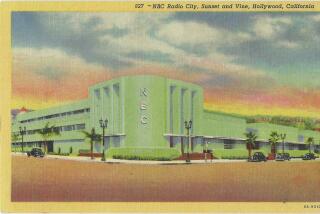Where’d my Mozart go?
L.A.’s new game of musical chairs began a few minutes before 6 a.m. Monday.
That’s when classical radio station 105.1 FM said adios to 18 years of cantatas and sonatas and bid hello to a new era with Brooks & Dunn singing “Believe,” a folksy ode to keepin’ the faith that heavenly rewards await those who persevere in a world of woe.
For the record:
12:00 a.m. March 2, 2007 For The Record
Los Angeles Times Friday March 02, 2007 Home Edition Main News Part A Page 2 National Desk 2 inches; 83 words Type of Material: Correction
K-Mozart: An article in Wednesday’s Calendar section about the change in formats at radio station 105.1 FM implied that the switch from classical music to country music took place a few minutes before 6 a.m. Monday. The live broadcast of the new country music format began before 6 a.m.; however, the station began playing recorded country music programming shortly after midnight Sunday. Also, the story identified Deborah Borda as executive director of the Los Angeles Philharmonic. She is the president and chief executive.
The station’s switch from KMZT, or “K-Mozart,” to KKGO, “Go Country 105,” brought the Nashville twang back to the L.A. airwaves’ FM band after a six-month absence, and perhaps reassured country music fans that sometimes keepin’ the faith is rewarded in the here and now.
But for classical music lovers, and the performing groups that hope to lure them into concert halls, the retreat of K-Mozart from the pure-toned FM band to the static-prone precincts of AM -- where it’s at 1260, previously occupied by KKGO -- has ushered in a period of uncertainty, adjustment and possible dispossession.
Before the switch, K-Mozart had an average hourly daytime audience of more than 30,000, according to owner Saul Levine -- but, with an average age of 60, these listeners were the wrong ones, at least for advertisers who want to reach younger consumers.
Levine said his revenue dropped from $8 million in the late 1990s to $4.8 million last year -- enough to barely break even after he took a six-figure loss in 2005. This year, more advertisers defected, and he was facing a $1-million loss. Hence, the leap onto the open range created last August when KZLA-FM dropped its country format.
As for classical music at AM 1260, Levine acknowledged he would have to build the audience “from ground zero” while hoping that high-definition radio, which solves AM’s fidelity problems but requires each listener to buy a special tuner, will become the new standard.
“This has been one of the most incredible days of my 48 years of broadcasting,” he said late Monday. Country fans were sending flowers. Advertisers who had shunned Wolfgang and Ludwig were popping out of the woodwork. And a classical music lover from Riverside was on the phone, “positively unhinged.... He was foaming at the mouth, saying, ‘You just can’t do this.’ ”
Meanwhile, at KUSC-FM (91.5), the nonprofit classical station based at USC, which typically has commanded an audience about two-thirds as large as K-Mozart’s, President Brenda Barnes was getting e-mails that said things such as “You’re still going to be humble, aren’t you?”
“There are only reasons to be humble,” Barnes said, while conceding that the switch at the other end of the dial had brought a raft of opportunities. “We have to earn the trust of K-Mozart listeners,” she said, “and in an incredibly quickly changing, fast-paced media environment these days, no one can take anything for granted.”
Rounding out a Southland classical radio landscape that’s crowded by dwindling national standards is Cal State Northridge’s KCSN-FM (88.5), which is audible in the Valley and the Westside. It will continue to be “extremely adventuresome” compared with KUSC, said programming director Martin Perlich. Classical programming is from 6 a.m. to 6 p.m. weekdays, and he says that won’t increase.
Both stations said they were being approached by groups that counted on K-Mozart to raise their profile via ads or with concert broadcasts. The prospect of broadcasting live performances over Levine’s AM operation has met with something less than a hallelujah chorus.
“The station has no real relevance for us on AM,” said Los Angeles Philharmonic Executive Director Deborah Borda. The orchestra, which airs some of its concerts on KUSC, has broken off talks with Levine about doing the same on K-Mozart with summer programming from the Hollywood Bowl.
At the same time, smaller groups, including the New West Symphony, the Pasadena Symphony and the Angeles Chorale, are ending live performance series on K-Mozart. “Sundays Live” from the Los Angeles County Museum of Art will continue. John Forsyte, executive director of the Pacific Symphony, said that orchestra had made no decision, but “I don’t think AM provides the fidelity that one needs, and I just don’t think the classical listenership is there.”
KUSC’s Barnes says she’ll listen to pitches from the disenfranchised groups and see which might fit into a broadcast schedule that already includes the Philharmonic, the Los Angeles Master Chorale and the Los Angeles Chamber Orchestra.
John Alexander, artistic director of the Pacific Chorale, said his group had not decided whether to stay with K-Mozart, but he worries about reaching out to younger people.
“This is a terrible blow,” he said, adding that Levine “had the guts to start a classical format, and that he lost his sponsors tells all of us that we have to reinvent our art form. It’s a wake-up call for classical music.”
More to Read
The biggest entertainment stories
Get our big stories about Hollywood, film, television, music, arts, culture and more right in your inbox as soon as they publish.
You may occasionally receive promotional content from the Los Angeles Times.











